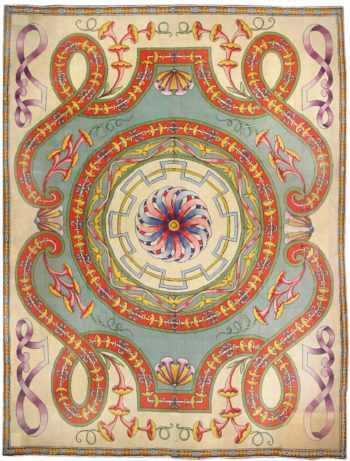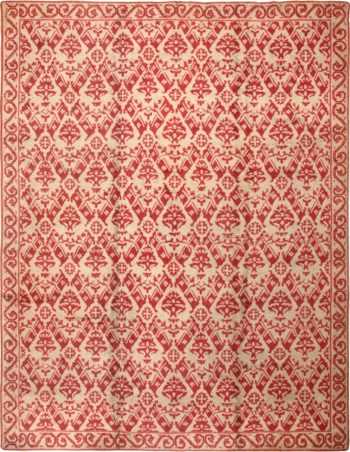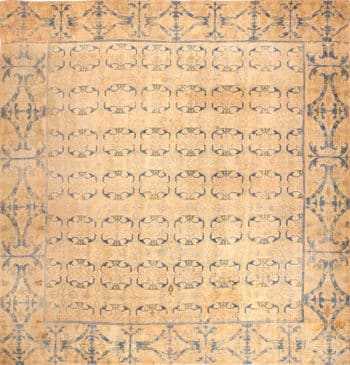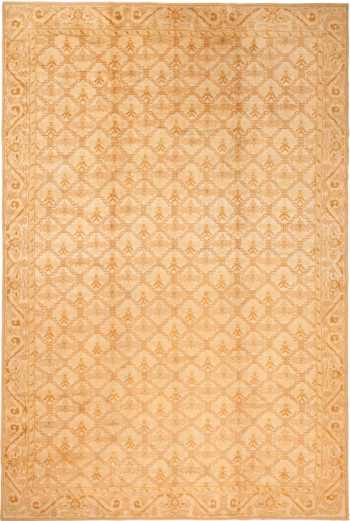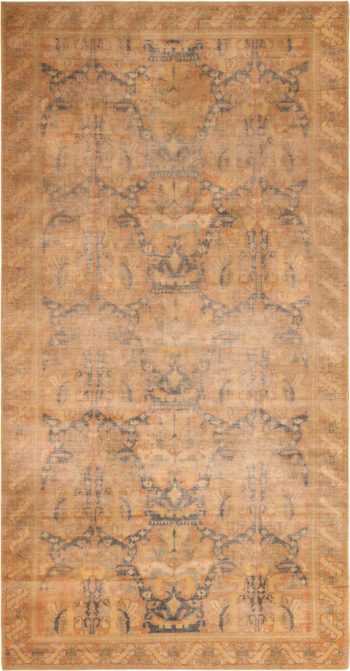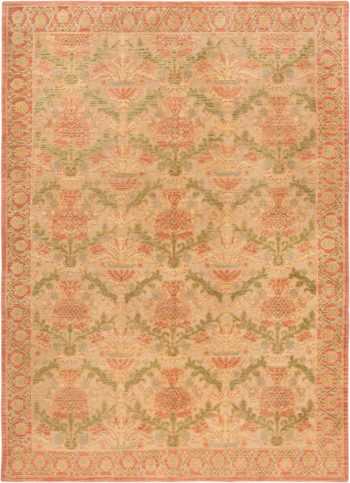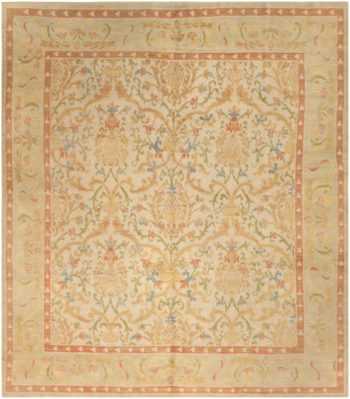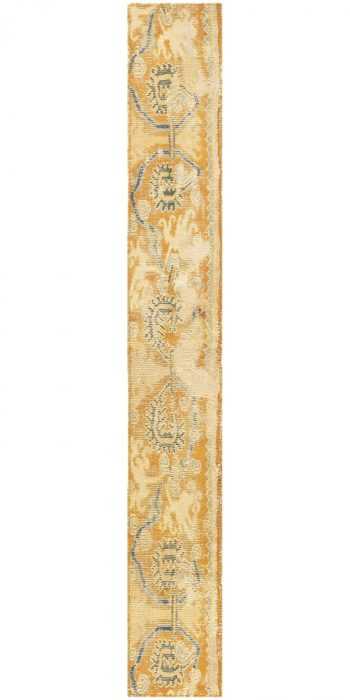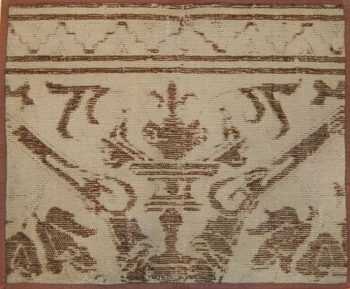Spain Rugs
Enjoy exploring our collection of rugs from Spain below, and you may just find the right match for your style.
Beautiful Oversized Spanish Art Deco Design Carpet 50065
$220,000.00Size: 20 ft 4 in x 28 ft 2 in (6.2 m x 8.59 m)Oversized Antique Spanish Savonnerie Rug 72914
$69,000.00Size: 15 ft 10 in x 26 ft (4.83 m x 7.92 m)Large Green Antique Spanish Savonnerie Carpet 49845
$54,000.00Size: 15 ft 6 in x 19 ft (4.72 m x 5.79 m)Large Grey Vintage Spanish Alpujarra Area Rug 46974
$39,000.00Size: 12 ft x 18 ft (3.66 m x 5.49 m)Beautiful Large Size Allover Design Antique Moorish Style Spanish Rug 70408
$28,000.00Size: 11 ft 5 in x 17 ft 10 in (3.48 m x 5.44 m)Beautiful Large Size Vintage Spanish Rug 50549
$26,000.00Size: 13 ft 10 in x 17 ft 6 in (4.22 m x 5.33 m)Collectible Rare Large Antique 16th Century Allover Spanish Alcaraz Early Rug 70154
Size: 16 ft x 17 ft (4.88 m x 5.18 m)Decorative Large Antique Spanish Rug 50581
$18,500.00Size: 9 ft 7 in x 15 ft 7 in (2.92 m x 4.75 m)Magnificent Vintage Spanish Rug 50548
$8,900.00Size: 10 ft 5 in x 15 ft (3.17 m x 4.57 m)Antique Spanish Cuenca Rug 71431
$28,500.00Size: 7 ft 4 in x 14 ft (2.24 m x 4.27 m)Decorative Room Size Antique Spanish Carpet 2678
$16,500.00Size: 9 ft 3 in x 12 ft 3 in (2.82 m x 3.73 m)Vintage Lattice Pattern Spanish Area Rug 70263
$12,000.00Size: 8 ft 2 in x 11 ft 6 in (2.49 m x 3.51 m)Vintage Soft Color Spanish Area Rug 46975
$14,000.00Size: 8 ft x 9 ft 3 in (2.44 m x 2.82 m)16th Century Antique Spanish Cuenca Fragment 3432
$1,450.00Size: 2 ft x 6 ft 2 in (0.61 m x 1.88 m)Rare Collectible Early Antique 16th Century Spanish Alcaraz Carpet Fragment 3430
$750.00Size: 1 ft 6 in x 1 ft 11 in (0.46 m x 0.58 m)
Learn More About Rugs and Antique Carpets from Spain
Rugs From Spain – The Iberian Peninsula has a human history that dates back to very first true human species. It is an area that has been conquered and reconquered many times, each time bringing something new to add to the already diverse culture. Many people consider the history of rug weaving in Spain to begin with the Muslim invasion of the 8th century. No one can deny that this historical event had a significant influence on the arts of the Iberian Peninsula, including rug weaving. But it is important to note that the people of Spain already had a history of the woven art that developed long before the Moors established themselves.
Rug Weaving in Spain Before the Moors
The use of area rugs as a floor covering is almost as old as human history itself. What began as placing animal hides on the floor of the cave would eventually develop into the magnificent rug weaving art form that we know today. Area Rugs and carpets became a highly prized item for trade and negotiations. It is believed that the crusaders in the 10th and 11th centuries were the first to bring Oriental pile rugs to Europe.
Prior to the Muslim invasion, only isolated occurrences of rug making could be found in Spain. The earliest extant carpet from Spain dates to the 10th century A.D. It is known as the Synagogue carpet and is of Jewish origin. After the invasion of the Muslims, many people have the idea that Spanish designs disappeared and were replaced Middle Eastern designs, but that is not entirely the case.
Rugs During The Muslims in Spain
During the Moorish conquest, Alcaraz was the main carpet production center. Moorish carpets relied heavily on design influences from the Anatolian Peninsula. They often had all over geometric patterns that resembled the tile work found in Islamic architecture of the time.
The armorial carpets dated to the 14th century have an all over pattern that contains the blazons of noble Christian Spanish families. Sometimes these armorial carpets feature a traditional Islamic carpet design that is abruptly interrupted by the insertion of Spanish heraldry.
While the Spanish carpets became less prominent during the Muslim conquest, they experienced a resurgence after the 1492 reconquest. By the 16th century, Spanish carpets had their own distinctive style. They often featured wreaths and pomegranates.
Spanish Rugs vs Moorish Rugs in Spain
It should be apparent by now that two different styles of rugs developed in Spain. Although, for a time Moorish rug production seemed to overshadow Spanish rug production, they remained stylistically different. One prominent feature of the rugs from Spain is the use of yellow. It is found in almost every design. Yellow was frequently paired with shades of blue, and over dye techniques were used to produce greens. In Muslim rugs, red was the predominant background color. The designs of Spanish rugs often feature geometric shapes and heraldic devices. However, the Moorish rugs resembled those from the Ottoman Empire.
One of the most distinguishing characteristics of Spanish Rugs is the use of what became known as the “Spanish Knot.” This rug knotting technique differed from the Persian and Turkish rug knots. In this technique, the knots are wrapped around alternate warps in each successive row, creating a staggered knot arrangement. It can be spotted by looking at the back of the carpet and looking for a diagonal alignment of the knots, along with the horizontal and vertical alignment produced by the Turkish and Persian rug knots.
This allowed the Spanish rug weavers to produce more detailed designs that would require a higher knot density if using other knotting techniques. They also tended to place three rows of weft between each row of knots. This creates a rug that is softer, lighter, and not as stiff as those produced with other knotting techniques. However, they also have a lower knot count than Moorish rugs. In this case, a lower knot count is not indicative of a lower quality design.
Rugs From Spain After the Moors
After the reconquest of Spain in 1492, the rug weaving tradition in Spain experienced a resurgence, with many of the antique rugs resembling carpets produced in France and other parts of Europe. They also began to experience high levels of patronage from the Spanish Monarchy. Royal workshops were opened, and the Moorish carpet works were closed down by Royal decree.
However, many of the characteristics attributed to the Moorish rugs became integrated into Spanish style. For instance, Spanish carpets began to use a wider range of color. Spanish carpets began to be produced in larger scale and they earned their own place in world trade.
One of the projects that Christopher Columbus hoped to accomplish was to find new rug dye materials to enhance the prestige of Spanish carpets. One of his contributions was cochineal, which produces an intense burgundy that differs from madder reds already being produced. This distinctive red became a hallmark of rugs produced in Spain. This color is sometimes referred to as Spanish red.
In 1720, Phillipe V established Real Fabrica de Tapices Manufactory in Madrid. This factory was meant to be a direct competition with the fabric works in Aubusson and Savonnerie, France. The carpets produced at this factory used the Turkish knot. They were the same size as French Aubusson carpets, but used black or red to bring out the designs.
Now you have a glimpse of the colorful history of carpet making in Spain. As you can see, there is much more to it than the Moors. Rugs from Spain have a rich history and display a greater diversity of techniques, color combinations, and styles than almost any other carpet style in the world. Their unique colors and eye-catching designs make them the perfect way to bring a distinctive look to an interior design.
You may also be interested in looking at our collection of: antique Spanish Cuenca rugs.

